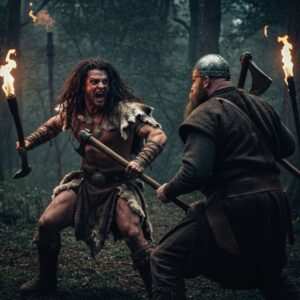Historical
Check out my latest video on the oddities of Sweden’s Queen Christina. She commissioned a 1-inch cannon to kill fleas
Beserkers: The Legendary Warriors
In the mists of ancient Norway, long before the Viking longships carved their way through fjords and rivers, there existed warriors whose ferocity became the stuff of legend: the berserkers. These men were not merely fighters; they were living storms on the battlefield. They wore no armor, relying instead on raw courage and an almost supernatural rage that left their enemies trembling. Accounts describe them entering battle in a trance-like fury, biting shields, howling like wolves, and striking with a savagery that made them nearly unstoppable.
Bear Shirt
The word “berserker” itself is believed to come from the Old Norse berserkr, meaning “bear-shirt,” hinting at a connection between these warriors and the animals they emulated in combat. Some wore pelts of bears or wolves, and it was said that they drew strength from these creatures, channeling the predator’s ferocity into their attacks. Berserkers weren’t just violent; they were feared for their apparent invulnerability. Legends tell of men who could walk through fire, shrug off arrows, or continue fighting even after receiving mortal wounds.
Scholars suggest that the berserkers’ fury may have been induced by ritual practices, possibly involving meditation, chanting, or the ingestion of hallucinogenic

mushrooms. These rites likely put them into a trance-like state, where pain and fear became irrelevant and aggression intensified to terrifying levels. Outside of battle, berserkers were seen as unpredictable, sometimes violent even toward their own kin, a reflection of the uncontrollable nature of the rage they harnessed on the battlefield.
Despite their fearsome reputation, berserkers were also revered. Kings and chieftains sought their service for crucial battles, believing that the presence of a berserker could turn the tide of war. Their legacy persists in Norse sagas, which immortalized them as symbols of strength, courage, and the thin line between man and beast. In modern times, the term “berserk” still evokes images of uncontrollable fury, a lasting echo of Norway’s legendary warriors who fought as if the wild itself coursed through their veins.
